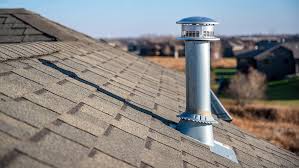The Role of Ventilation in Roofing Installation
Ventilation is pivotal in roofing installation and critical for maintaining a roof’s integrity, longevity, and functionality. Proper roof ventilation ensures a home’s structural stability and contributes to indoor air quality and energy efficiency. We will explore how ventilation impacts roofing systems and why it is essential for homeowners and Roofing contractor to prioritize this aspect during construction or replacement projects.
The Importance of Roof Ventilation for Longevity and Efficiency
Roof ventilation regulates airflow within the attic or roofing space, ensuring that warm, humid air can escape and fresh air can circulate freely. This process is crucial in maintaining a balanced temperature and humidity level, directly impacting the durability of roofing materials and the comfort of the home’s interior. Heat and moisture can become trapped in the attic without adequate ventilation, leading to mold growth, rot, and weakened structural components. Over time, these problems can necessitate costly repairs or even premature roof replacement.
In addition to protecting the roof’s structural elements, ventilation helps regulate the home’s temperature year-round. During summer, poorly ventilated roofs trap excessive heat, increasing cooling costs and making living spaces uncomfortable. In winter, warm air from the house can rise into the attic, causing snow on the roof to melt and refreeze, leading to ice dams that damage shingles and gutters. Homeowners can avoid these issues by maintaining proper ventilation, reducing energy consumption, and enhancing their roof’s lifespan. Whether through ridge vents, soffit vents, or gable vents, incorporating a ventilation system during roofing installation is a decision that yields long-term benefits.
How Ventilation Prevents Damage and Improves Indoor Air Quality
One of the lesser-known but equally important roles of ventilation in roofing installation is its impact on indoor air quality and overall home health. Due to trapped moisture, a poorly ventilated attic can become a breeding ground for mold, mildew, and other allergens. These contaminants can seep into living spaces, affecting the air occupants breathe and potentially causing respiratory issues or allergic reactions. Proper ventilation mitigates this risk by allowing moisture-laden air to escape, keeping the attic dry and sterile to mold growth.
Additionally, ventilation systems help prevent the buildup of harmful gases such as carbon monoxide, which can accumulate in poorly ventilated spaces. By facilitating a steady exchange of air, roof ventilation ensures that indoor air remains fresh and safe for occupants. Furthermore, maintaining optimal humidity levels through proper ventilation can protect stored items in the attic, such as holiday decorations, old furniture, or important documents, from moisture damage.
Another critical function of ventilation is safeguarding the roofing materials themselves. Excessive moisture and temperature fluctuations can cause shingles to warp, nails to loosen, and underlayment to deteriorate. Over time, this compromises the roof’s ability to protect the home from external elements, leading to leaks and further structural damage. By incorporating a well-planned ventilation system during installation, homeowners can prevent these issues, protect their investments, and ensure the safety of their living space.
The Role of Ventilation in Preventing Energy Loss
Another significant benefit of proper ventilation during roofing installation is its ability to enhance energy efficiency by reducing energy loss. Poorly ventilated roofs often trap excessive heat during summer months, forcing cooling systems to work harder and increasing electricity bills. Similarly, during winter, warm air that escapes into the attic can lead to uneven heating in the home and put unnecessary strain on heating systems. Ventilation systems, such as ridge and soffit vents, allow fresh air to enter while expelling trapped heat or moisture, creating a more energy-efficient environment. With a balanced system in place, the overall energy demand of the home is reduced, saving homeowners money while minimizing their environmental footprint. Incorporating ventilation during installation is not just about protecting the roof—it’s about creating a functional, cost-effective, and environmentally conscious home.
Additionally, proper ventilation supports renewable energy solutions such as solar panels. Solar panels’ roofs are prone to overheating without proper airflow management, reducing their efficiency and lifespan. By installing an efficient ventilation system, homeowners can ensure that their solar panels operate optimally, maximizing energy generation. This integration of ventilation and renewable energy technologies further highlights the importance of ventilation planning during roofing projects.
click here : How to Optimize Your Plant
The Long-Term Financial Benefits of Roof Ventilation
Proper roof ventilation protects the roof’s structural integrity and provides significant long-term financial benefits. Addressing ventilation during installation prevents costly repairs down the road. For example, mold removal, replacing warped shingles, or fixing water damage caused by trapped moisture can be expensive and disruptive. Investing in ventilation systems upfront reduces the likelihood of these problems and ensures that the roof remains durable for its intended lifespan.
Furthermore, homes with proper ventilation tend to have higher resale values. Prospective buyers are often concerned with energy efficiency, structural integrity, and indoor air quality, all positively influenced by a well-ventilated roof. Highlighting a well-designed ventilation system as part of the home’s roofing can give sellers a competitive advantage. Ultimately, ventilation is more than a technical aspect of roofing—it is a critical element that influences the home’s overall value, efficiency, and comfort, making it a worthwhile investment for any homeowner.
The role of ventilation in roofing installation extends far beyond mere airflow management—it is a cornerstone of roof health, energy efficiency, and indoor air quality. Proper ventilation extends the lifespan of roofing materials, prevents costly damage, reduces energy consumption, and promotes a healthier living environment. We have explored how ventilation enhances a roofing system’s performance and why it should never be overlooked during installation. Homeowners can enjoy a durable, efficient, and safe roof for years by prioritizing this critical aspect.

